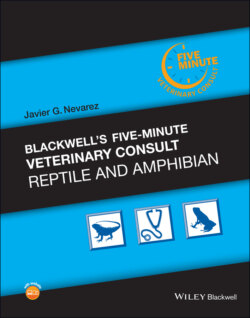Читать книгу Blackwell's Five-Minute Veterinary Consult: Reptile and Amphibian - Javier G. Nevarez - Страница 54
INTESTINAL TRACT
ОглавлениеThe majority of adult amphibians are carnivores, but larvae may be herbivores. Sirens may also remain omnivorous into adulthood. Caecilians rely on olfaction to find prey while anurans and urodeles rely primarily on sight. Amphibians have jointed pediceled teeth in which the crown is loosely attached to the base (pedicel) of the tooth. The tooth itself attaches to the jaw. Teeth are used for holding prey in place rather than chewing, so they are often angled backward toward the pharynx. Teeth are shed and replaced through life. There are one or two rows of maxillary and mandibular teeth in most species. However, ranid frogs lack mandibular teeth and bufonid toads have no teeth. Anurans and salamanders have well‐developed moveable tongues commonly used for prey apprehension. Caecilians have fixed tongues. Frogs in the family Pipidae (clawed frogs and Surinam toads) lack tongues and vocal cords.
